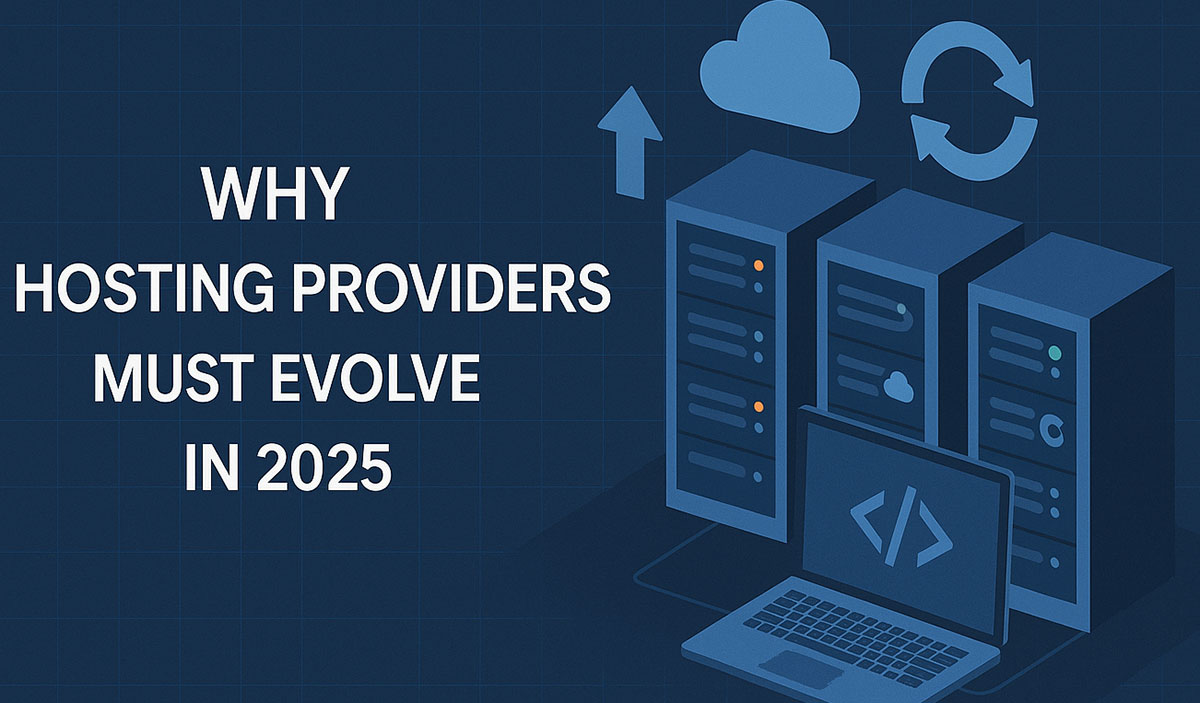No products in the cart.
 2025 marks a turning point for web hosting providers
2025 marks a turning point for web hosting providers
2025 marks a watershed moment for web hosting providers. Rising customer expectations, disruptive technologies, and sustainability demands are reshaping the hosting landscape. Web hosting providers must evolve or risk obsolescence.
High-performance hosting becomes the norm
Users expect lightning-fast websites with near-zero downtime. Performance benchmarks such as 99.999% uptime and sub-100ms latency have become standard. A one-second delay in page load can reduce conversions by 20%, based on Google research. Shared hosting models fail to deliver at this level. Scalable, high-availability architectures must replace them.
Edge Computing Takes Center Stage
Advancements in edge computing push data processing closer to end users, minimizing latency and boosting performance. Reduced latency supports demanding applications such as VR, IoT, and smart cities. Leading CDNs like Cloudflare and Akamai have integrated edge nodes globally, enabling real-time responsiveness in critical workloads.
AI-driven infrastructure becomes Essential
Artificial Intelligence redefines infrastructure management. AI-enabled platforms predict traffic spikes, auto-scale resources, and self-heal. Google Cloud’s Active Assist uses AI to optimize cloud usage and costs. Hosting providers must adopt similar capabilities for smarter, more efficient systems.
Green Hosting Is No Longer Optional
Sustainability is a competitive requirement. Providers such as GreenGeeks and Hetzner operate using renewable energy and offer carbon-neutral hosting solutions. Regulatory pressure and customer demand for transparency make eco-conscious operations essential.
Zero Trust Security Architecture
Modern cybersecurity strategies rely on the Zero Trust model, where trust is continuously validated for every user and device. The model includes micro-segmentation, behavioral analytics, and continuous verification, based on NIST’s Zero Trust Architecture framework. Hosting providers must move beyond firewalls and adopt identity-centric security models.
Cloud-Native Replaces Legacy
Cloud-native infrastructure, built around containers and microservices, is the default. AWS Fargate and GKE are go-to platforms for scalable, flexible workload deployment. Traditional monolithic servers do not fit this paradigm.
Multi-Cloud and Hybrid Resilience
Vendor lock-in is risky. Enterprises adopt multi-cloud and hybrid models to increase resilience. Netflix uses both AWS and GCP to ensure uptime. Hosting providers must provide interoperability and seamless orchestration across cloud providers.
Kubernetes as Hosting Backbone
Containerized architectures continue to grow. Kubernetes is the leading platform for modern application deployment. Features such as auto-scaling, load balancing, and self-healing make it indispensable. Managed services like Azure Kubernetes Service (AKS) and Red Hat OpenShift show that Kubernetes is now mainstream.
Serverless Hosting Is Here
Solutions like AWS Lambda and Vercel enable serverless computing, allowing developers to focus on code while infrastructure management is abstracted. Billing is usage-based, and scalability is automatic. The model supports lean, responsive hosting with minimal overhead.
5G and Hosting Infrastructure
5G network expansion delivers drastically lower latency, driving the growth of responsive, real-time applications. Hosting infrastructures must evolve to support higher throughput and edge demands, including applications such as gaming, video conferencing, and AR.
IPv6 Becomes Critical
IPv4 is obsolete. IPv6 adoption accelerates due to larger address space, improved routing, and better performance for mobile and IoT. Hosting providers without IPv6 readiness, including dual-stack DNS or IPv6-only VMs, face compatibility issues.
Infrastructure as Code (IaC)
Tools like Terraform, Ansible, and Pulumi enable automated infrastructure provisioning through Infrastructure as Code (IaC) practices. Automation enhances reliability by ensuring consistency, eliminating manual errors, and streamlining updates. Hosting firms using IaC deliver faster, more reliable services.
Predictive Infrastructure with ML
Machine Learning enables predictive maintenance and workload forecasting. Platforms like Datadog’s Watchdog and New Relic AI detect anomalies before failures occur, maintaining continuous uptime and performance.
The Legacy System Liability
Legacy infrastructure hampers performance, complicates compliance, and increases costs. Businesses that fail to modernize face declining customer retention and greater exposure to breaches. A 2024 IDC report found 58% of data breaches originate from outdated systems.
Regulatory Compliance Pressures
Data privacy regulations like GDPR, CCPA, and India’s DPDP Act mandate compliant hosting setups. Hosting providers must provide regional data centers, auditable logging, and encrypted backups to meet legal standards.
Customer-Centric Experiences
Clients demand more than uptime. They expect intuitive dashboards, analytics, and self-service. Hosting control panels like cPanel, Plesk, and RunCloud are expected to offer seamless UX and support automation.
Backup and disaster recovery expectations
Continuous backup and instant recovery define the new norm. Solutions like Veeam, Acronis, and Zerto provide snapshot-based recovery, geo-redundancy, and ransomware protection. Ensuring data resilience and achieving zero RPO/RTO objectives are core responsibilities for service providers.
Quantum Readiness
Quantum computing poses future security risks. Providers explore quantum-safe encryption and modular stack upgrades to prepare for a post-quantum environment.
Developer-Centric Hosting
Hosting platforms cater to developers with robust APIs, CLI tools, and CI/CD integration. Providers like DigitalOcean, Render, and Railway emphasize developer experience to drive adoption and satisfaction.
Innovation-Driven Infrastructure
Innovation is essential. Providers invest in automation, smart provisioning, and resource optimization to reduce costs and generate new revenue. Infrastructure is not just backend-it is a growth enabler.
Final Thoughts:
2025 marks a pivotal shift. Hosting providers must adopt modern technologies, embrace sustainability, and prioritize customer needs. Strategic relevance now outweighs server space in a digitally transformed world.Stay updated! Follow us on social media! Facebook, Twitter, LinkedIn
Check out our newest blog entry (White-Label Hosting Support for Scalable Growth)
Subscribe to get free blog content to your Inbox



 2025 marks a turning point for web hosting providers
2025 marks a turning point for web hosting providers